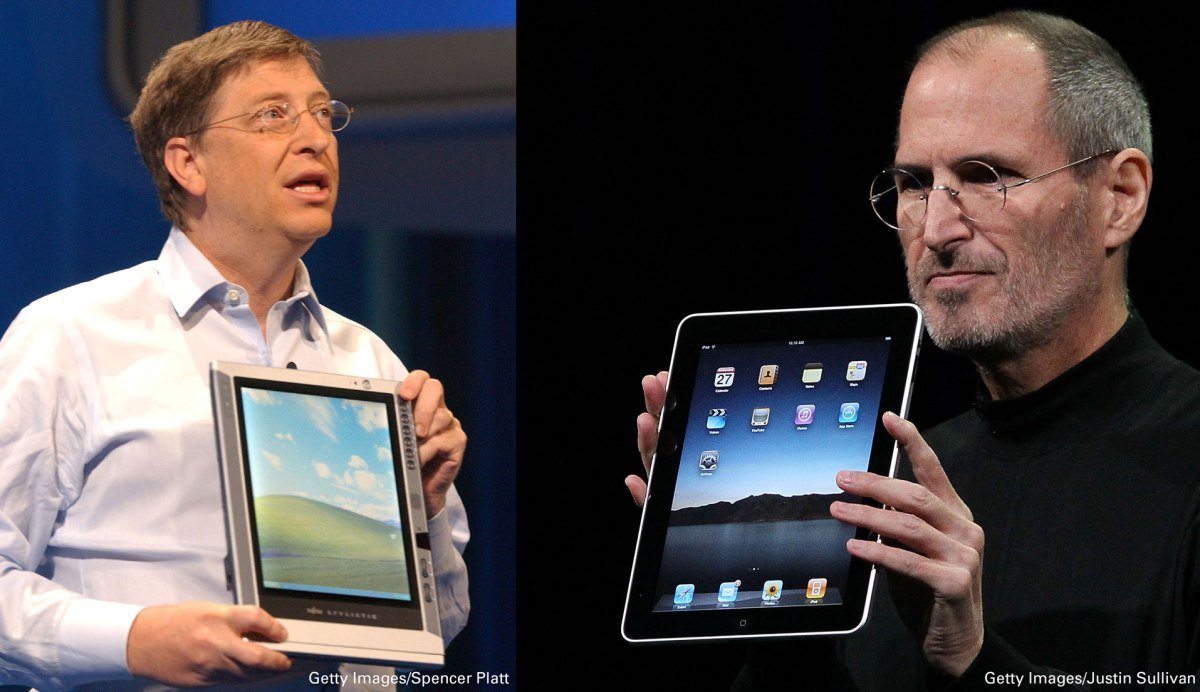The U.S. Department of Justice and the attorneys general from 16 states and the District of Columbia have filed a lawsuit against Apple in federal court this morning, alleging antitrust violations. The suit claims that Apple holds a monopoly in the premium smartphone market and has utilized illegal tactics to maintain that position.
Leaving aside the details of these alleged tactics and their legality, Attorney General Merrick Garland noted striking similarities between this case and the DOJ’s antitrust suit against Microsoft in the 1990s. Garland stated, “The landmark Microsoft case held a monopolist accountable for using its market power to suppress technologies that would have allowed users to choose different computer operating systems. Today’s complaint alleges that Apple has engaged in many of the same tactics as Microsoft did.”
However, there is one key difference between these cases. While Microsoft had a clear monopoly over the market for personal computer operating systems, Apple’s monopoly position is not as straightforward.
“Having a monopoly is not illegal,” Garland acknowledged in a press conference regarding the case. “But it is illegal to utilize certain tactics to uphold or strengthen that monopoly. To prove this, it must be established that the defendant possesses enough market power to hinder competition.”
At the time of Microsoft’s antitrust case, Windows held over 90% of the market share for personal computer operating systems. In fact, a 2000 estimate from Goldman Sachs reported that Microsoft operating systems were present on 97% of all computers.
Meanwhile, according to the DOJ’s lawsuit, Apple currently holds more than 70% of the revenue market share for smartphones in the U.S. However, when measuring by units shipped, Apple’s share is closer to 64% as of the last quarter of 2023, ahead of second-place Samsung’s 18%. The DOJ claims that there are other metrics that demonstrate the iPhone’s dominance, such as the fact that most young users and higher-demographic households choose iPhones over Samsung phones running on Google’s Android operating system.
The DOJ argues that the U.S. is a relevant market for this case, as most consumers purchase smartphones through carriers and potential new entrants must comply with U.S. telecommunications laws. This is significant because Apple’s global market share is much lower (only 23%, with Samsung at 16% in second place). The top spot is taken by “Other” devices, including low-cost Android phones. This shows that the global market is still fragmented, which changes the competitive landscape as developers have a strong incentive to create apps for Android. In contrast, Microsoft’s dominance in its antitrust case was global, making it virtually impossible to find another viable alternative during that time.
The key section of the DOJ’s case, titled “Apple has monopoly power in the smartphone and premium smartphone markets,” begins on page 66. The argument centers around barriers to entry.
First, the DOJ claims that since most people already own smartphones and upgrade when purchasing a new one, they are more likely to stick with a brand they are familiar with, such as Apple. The lawsuit alleges that Apple has implemented artificial barriers to make switching difficult, such as the difference between blue and green bubbles for messaging between iPhone and Android users, and potentially restricting the functionality of third-party cross-platform video apps in favor of FaceTime, which only works on Apple products. If customers do choose to switch, they may encounter costs and obstacles such as adapting to a new interface, purchasing new apps, and transferring data, to name a few concerns.
Secondly, the DOJ lists various technical barriers to entry, such as the cost of acquiring expensive components, developing sophisticated hardware and software, and securing distribution agreements. There is also circumstantial evidence, such as Apple’s consistently high profit margins on iPhone sales, to support the claim of monopoly power.
These arguments may hold weight with the judge presiding over the case. However, Apple could argue that differentiation and integration of products does not automatically equate to hindering competition. A fully integrated platform with built-in apps for specific tasks, such as web browsing and video conferencing, is often more convenient for customers to use. Customers continue to choose the iPhone for its features, rather than being forced into it due to artificial barriers blocking access to other options.
In response, Apple could point to the extensive investments they have made over the last 15 years to build strong relationships with suppliers, carriers, and developers, questioning why they should be penalized now for their hard work in creating a competitive advantage.
This pattern is often seen in antitrust cases within the tech industry. An innovative company rises to the top through a combination of hard work, luck, and fierce business strategies. They develop a strong lead, often driven by network effects. Rival companies complain. Governments step in. The dominant player is put on hold while new competitors gain entry – similar to how Apple and Google rose to prominence against Microsoft in the 2000s by offering smartphone operating systems that made desktop computers and Windows less relevant.
And so, the cycle continues.








